Don't wanna be here? Send us removal request.
Text
Monsurah Kamal Movie Review 3 Beyond the Frame 20-5-2018 I, Tonya
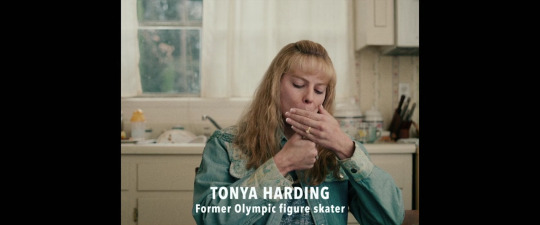
Figure 1
I Tonya is a true story about a figure ice skater who was exceptionally good but later got caught up in a scandal which ruined her career. She was raised by unconventional parents and always stood out among her mates. The movie leaned towards Marxism, Narcissism and different versions of Truths. Marxism, because it shows the main character is from a class lower than her colleagues, which in turn affected her psychologically, financially and romantically. It is suffice to say Marxism and Capitalism are interrelated as, in order to fully analyze social class, the understanding of the nature of capitalism is important. Marx defined classes as follows:
i. The owner of the property and the means of how it came to be and the breadwinner in the process.
ii. The social relationships between work and labor.
iii. The producer and who controls the majority

Figure 2

Figure 3
We can say the main character is a bit narcissistic which is attributed to her upbringing. All she ever wanted was to be loved and admired, which is why she endured physical abuse from both mother and her husband. Narcissism is the pursuit of gratification from vanity or egotistic admiration of one's own attributes (Wikipedia). The character knows she is very talented and nothing is ever her fault. According to Sigmund Feud, an Australian neurologist and forefather of psychoanalysis, parental love towards their children and their attitude towards them, could be seen as a revitalization and creation of their own narcissism. The child will have a sense of importance; that feeling has been stimulated and nourished by the parents as they see in their child things they couldn’t accomplished.
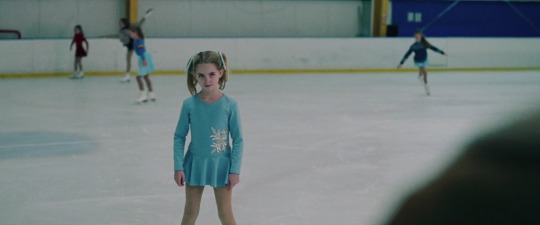
Figure 4
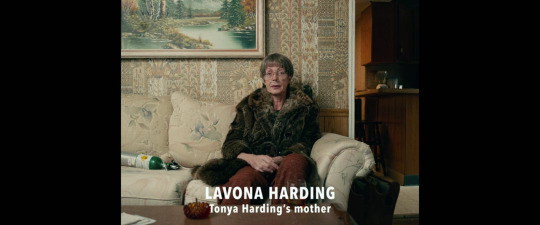
Figure 5
The different versions of Truths are that each party conveyed the truths as they saw fit. The media conveyed their own version to fill up their 24 news cycle, the husband lied to some extent but only conveyed partial truth to cover his back, and the man behind it all tried to frame his best friend to get the FBI off his back. Philosophically there are three theories of Truths; the Correspondence Theory of Truth, the Coherence Theory of Truth and the Pragmatic Theory of Truth.
· The Correspondence theory argues that what it’s thought to be true is whatever corresponds to reality. “Truth” doesn’t necessarily mean “facts” as it cannot either be true or false, it is just how the world is.
· The Coherence Theory is how our conception of truth actually works. A belief is true when we are able to organize it into a sensible idea; it fits in with all our other beliefs without creating self-doubt.
· The Pragmatic Theory for it to be considered accurate, we need to determine whether the belief is true or not which can be explored if the belief has a useful application in the world. However, if it doesn’t then it is considered not true.
It is apparent that when it comes to the versions of truths displayed in the movie, the coherence theory is more applicable.
All in all, the movie was an enlightening and powerful portrayal of the real events of Tonya Harding.

Figure 6
References:
Marx on Social Class: http://uregina.ca/~gingrich/o402.htm
Narcissism: https://en.wikipedia.org/wiki/Narcissism
Three Different Theories: http://mrhoyestokwebsite.com/Knower/Useful%20Information/Three%20Different%20Theories%20of%20Truth.htm
0 notes
Text
I Tonya
Monsurah Kamal
Movie Review 3
Beyond the Frame
13-5-2018
I Tonya
I Tonya is a true story about a figure ice skater who was exceptionally good but later got caught up in a scandal which ruined her career. She was raised by unconventional parents and always stood out among her mates. The movie leaned towards Marxism, Narcissism and different versions of truths. Marxism because it shows the main character is from a class lower than her colleagues, which in turn affected her psychologically, financially and romantically. We can say the main character is a bit narcissistic which wouldn’t be surprising considering her upbringing. All she wanted was to be loved and admired which is why she endured physical abuse from both mother and her husband. The different versions of truths are that each party conveyed the truths as they saw fit. The media conveyed their own version to fill up their 24 news cycle, the husband lied to some extent but only conveyed partial truth to cover his back, and the man behind it all tried to frame his best friend to get the FBI off his back. All in all, the movie was an enlightening and powerful portrayal of the real events of Tonya Harding.
1 note
·
View note
Text
Monsurah Kamal
Beyond the Frame
Hypernormalisation Review
The Soviet Union became a society where everyone knew that what their leaders said was not real because they could see with their own eyes that the economy was falling apart. But everybody had to play along and pretend that it WAS real because no-one could imagine any alternative. One Soviet writer called it "hypernormalisation". You were so much a part of the system that it was impossible to see beyond it. The fakeness was hypernormal.
This comment in the movie is the part that made the most sense to me and applies to what is happening around the world today. We are so much part of the system that we cannot see beyond it.
The movie was very informative, greatly illustrated with footages of events and the sound effects and background music made a great impact on the overall documentary. Most of the topics that were discussed weren’t basic knowledge to a lot of people. It really opened my eyes to how politics work, how the government were able to deceive people by different means necessary.
. The term "hypernormalisation" is taken from Alexei Yurchak's 2006 book Everything Was Forever, Until It Was No More: The Last Soviet Generation, in which Yurchak argues that for many decades everyone had known the Soviet system was failing, but as no one could imagine any alternative, politicians and citizens were resigned to maintaining a pretence of a functioning society. Over time, this delusion became a self-fulfilling prophecy and the "fakeness" was accepted by everyone as real, an effect that Yurchak termed "hypernormalisation. - Wikipedia
The movie is divided into nine parts; 1975, The human bomb, Altered States, Acid Flashback, The Colonel, The truth is out there, Managed Outcomes, A Cautionary Tale and A World without power.
An event took place in the year 1975 at the same time in both New York and Damascus between two politicians; Henry Kissinger, US Sectary of State and President of Syria – Al-Asaad. Al Asaad wanted to unite the Arab nations while Kissinger felt that would not keep him in power, so he undermined Al Asaad by playing a double game and making a deal with Iran, which aggravated Al Asaad and made him brutal. To cut a long story short, this would be Al Asaad’s mental breakdown where he became more brutal, lost his optimisms and trust in the world.
The poor man’s atomic bomb which is now called the suicide bomb is a sick and appalling way of becoming a martyr. This martyrdom was first instilled into the minds of people by Khomeini as a way of attacking American’s troops in Lebanon; the troops which later pulled out of Lebanon and made Al Asaad the first Arab to defeat the Americans and pull them out of the Middle East. This “suicide bombing’ method has now become disastrous that the men who first initiated it can no longer control it.
Altered States and Acid Flashback: Cyberspace was created and was a tangle of giant information invisible to ordinary people and to politicians. No laws or politicians to protect you.
The Colonel: It shows how when things don’t go as planned for a government administration, the best solution is to look for a common enemy. President Reagan used Muammar Gaddafi as a pawn making him to be a villain and Gaddafi gladly played the role. He was already an isolated figure so with a good amount of fame he was able to push forward his propaganda theory which was called The Third Way.
The Truth out there: Perception Management is the method used by the government to distract and deceive its people from the actual reality. It shows how the government was testing a new weapon and wanted to keep it a secret so instead they led the people to believe it was UFOs landing on Earth. There is another footage shows how people now focus on themselves rather than change the world.
Managed Outcomes: The Creation of Eliza and Alaadin. Alaadin is a computer program that can predict possible outcomes and risks of a financial deal. Eliza was created for reassurance instead of medication, it became a program tell their inner feelings and secrets too. It basically repeats what is being told and that made people reassured.
A Cautionary Tale: At the beginning it was about Trump casino in Las Vegas and banks have realized he no longer had money to pay so they took over his buildings. He was worried about Kashiwagi whom he had lost millions of dollars to, so he devised a plan to win back his money by asking for help from Jess Marcum, a card counter. After five agonizing days, Kashiwagi finally lost but before he could pay up his debt he was hacked to death by yakuza gangsters.
There was also the talk of the Lockerbie bombing and who was responsible for it. Syria was blamed for it but it turned to be Libya behind it. They couldn’t accept that Libya did it because they thought the West was trying to appease to Syria’s leader.
Another topic was of suicide bombing which was a thing of Shia has now turned into what Sunnis are using to attack. They were attacking civilians which Shias never did..
Later on, Muammar Gaddafi became the people best friend through a means called Perception Management by framing the narrative.
A World Without Power: the effect of the war and people moving on to cyberspace. It was later discovered that cyberspace was used in different ways like sharing their intimate parts to another person and watching pornography. Muammar Gadaffi was no longer the West best friend; they turned their backs on him once again. The Arab Spring was disastrous.
2 notes
·
View notes
Text
Reflection Paper 7
Multiple Meanings
Human beings have different perceptions on certain things. We decode and understand in our own way. Touching upon one of my colleague’s assignment which was about the gaze and propaganda theory; while doing her research she decoded her dove differently than we did. For example, this picture can conjure different meanings.

This ad is stating the fact that women are beautiful regardless their colors or shapes. It doesn’t matter if you are pale, tan or dark skin; dove has got you covered and its catering to women around the world. Here you can see it through a female gaze and you can tell by how simple they are dressed.
Without the dove ad sign it could mean an underwear advertisement at least that what I initially thought.
It could also mean women empowerment advertisement, women running the world and all.
Another one of dove ad campaign that is pandering to diversity is this:
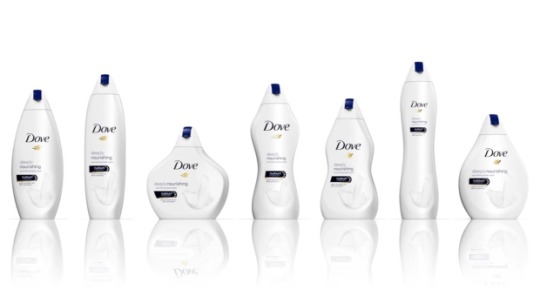
It could be said that Dove main aim was to promote positive body image and the company even said in a video that “Beauty comes in all shapes and sizes”. However, what it did was label and offend women who are already self concious of their body. Here are some of the backlashes the ad received.
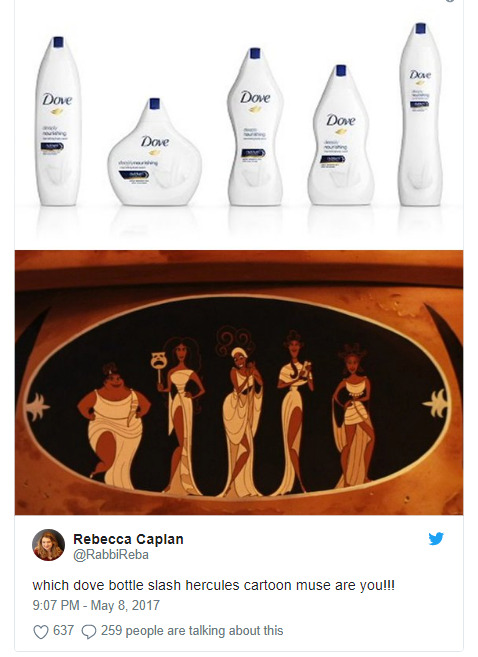

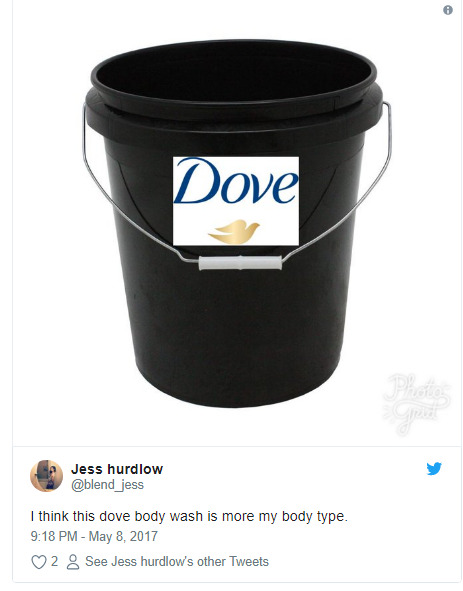

While some might feel empowered and grateful that there is a bottle of soap that caters to you, celebrate and ackowlegde how YOU feel, others like myself find it offending.
0 notes
Text
Monsurah Kamal
Beyond the Frame
Assignment 2/ Research
Ronnie Close
Semiotics and Advertising
Semiotics is the main key of encoding and decoding advertisements. Without it, advertisers will have a hard time getting their messages across to the audience. So what is semiotics? And who is the theorist behind it? Semiotics is the study of signs. One of my favorite definitions of semiotics goes as follows: “it is the philosophical theory of signs and symbols which helps in interpreting the signs and symbols”. Roland Barthes is widely known for his theories on signs which followed on the approach of the Swiss linguist and semiotician Ferdinand de Saussure. In our day to day lives, we are susceptible to the adverts we see either consciously or unconsciously. You could be driving on the highway and for a brief second your attention was diverted to new ad for your favorite chocolate or it could be something you have never seen before. My point is, these ads have different hidden signs and meaning they are trying to get through us.
There are two different elements of advertisement which are the outside level and the original level.
Let’s take an example of a Pepsi and Chipsy ad which was broadcasted in Ramadan 2015 and break it down according to both levels.
Looking closely, we can see the logo on the cans and bottle of Pepsi. It is well known that even if the word “Pepsi” was not written on it, we would still understand. The font can either be written as all capitals or lowercase letters. Font color is dark blue and the Pepsi globe is a swirling color of red, white and blue. These are creative signs for the outside level. Meanwhile, the original level, the signs has to be interpreted by the consumer.
According to Eco (1983), “The key to advertising analysis is the process of understanding the signifier and the signified in the advertisement. The signifier is the thing and the signified is the psychological thought. A product has both. In an advertisement, the signifier is the color, brand name, logo, design, technology and punch line”. Decoding this advertisement, we can see the name, logo, and design on the bottle and on the wall which will indicate that this might be a Pepsi ad.
Denotative
Signified can be classified into two levels of meanings:
Connotative
Barthes explains the difference between these two. Denotation is the literal and primary meaning while Connotation is the second order i.e. the secondary meanings. He also states that images are polysemous which means that it has multiple meanings. It all depends on the way we look at it.
According to Charles Pierce, signs can be categorized into three forms: Icon, Index and Symbols.
· Icon has a physical resemblance to the thing being represented. Ex: A watch.
· An index shows proof of what is being represented. Dark clouds which shows either it’s going to rain or a storm is brewing.
· A symbol has no resemblance between the signifier and the signified. It must be culturally learned. Ex:
According to Daniel Chandler (2007), “To coin a word to refer to a thing, the community must agree on a simple meaning, within their language, but that word can transmit that meaning only within the language’s grammatical structures and codes. Codes also represent the values of the culture, and are able to add new shades of connotation to every aspect of life”. To illustrate this, I would say first time watching the ad; my primary meaning was that the concept of Ramadan is being celebrated. However, my Egyptian friend, her primary meaning was a bit different. Why? Because of the codes and signals that was being shown all over the video which my non-Egyptian eyes couldn’t interpret. That was the work of the connotative meaning; she was able to decode by understanding the culture and the hidden meanings. As Arthur Berger points out, “the problem of meaning arises from the fact that the relation between the signifier and the signified is arbitrary and conventional”. It correlates to what Barthes explained about images being polysemous; it is safe to say that signs can also be polysemous. In order for us to understand what the ad message or information is, they need to use appropriate signs, symbols and easy language which can be helpful to the media illiterate.
According to Chandler (2007), “A cue is a signal of something or a reminder of something. It brings to mind something from past knowledge or previous experience that provides a framework of meaning that can be used to interpret the sign”. This is so true, because I lacked these cues; I wasn’t able to decode the ad. The video is full of cues which are meant for audiences who have full knowledge of Egyptian movies. Thus making it easy for them to know which actors/actresses, and which movie they starred in.
Summary
ICONS
SYMBOLS
INDEXICAL
SIGNIFIED SIGNIFIER
CONNOTATIVE
DENOTATIVE
References
http://www.citrinitas.com/papers/research-update01/barthes.htm
http://kellyludwig.com/kcai-embeds/act-semioticslecture-intro2.pdf
https://uk.sagepub.com/sites/default/files/upm-binaries/66880_The_Work_of_Representation.pdf
http://vanseodesign.com/web-design/icon-index-symbol/
Video Link: https://www.youtube.com/watch?v=P_NA5_qFsWI
0 notes
Text
Monsurah Kamal
Research 1
Ronald Barthes
Beyond the Frame
Barthes and Semiotics
Barthes is one of the leading theorists of semiotics, the study of signs. He is often considered a structuralist, following the approach of Saussure, but sometimes as a poststructuralist. One characteristic of Barthes’s style is that he frequently uses a lot of words to explain a few. He provides detailed analyses of short texts, passages and single images so as to explore how they work. https://ceasefiremagazine.co.uk/in-theory-barthes-2/
According to Barthes, anything in culture can be a sign and send a specific message. In his book called Mythologies, he mentioned some ways of encoding these messages. For example, in page 109 of his book, his ‘principal assertion that “myth is a type of speech,” which goes back to the original meaning of the Greek “mythos” (word, speech, story). He explained that myth is a “system of communication” or a “message,” a “mode of signification.”; which implies that everything can be a myth, provided that it conveys some meaning or message. Since language is the universal method of communication in humans, we can potentially convert everything into language. http://web.sbu.edu/theology/bychkov/barthes.pdf
One of his quotes which states that: “A garment, an automobile, a dish of cooked food, a gesture, a film, a piece of music, an advertising image, a piece of furniture, a newspaper headline – these indeed appear to be heterogeneous objects. What might they have in common? This at least: all are signs… this car tells me the social status of its owner, this garment tells me quite precisely the degree of its wearer’s conformism or eccentricity.”
There are three types of signs in the study of semiotics:
Iconic signs - icons are sign where meaning is based on similarity of appearance.
Indexical signs – indexical signs have a cause and effect relationship between the sign and the meaning of the sign. There is a direct link between the two.
Symbolic signs – these signs have an arbitrary(random) or conventional link.
Signifier and Signified:
In each case, the sign can be broken into two parts, the signifier and the signified.
The Signifier is the thing, item, or code that we “read” – so, a drawing, a word, a photo etc. Each signifier has a signified, the idea or meaning being expressed by that signifier. Only together do they form a sign. There is often no intrinsic or direct relationship between a signifier and a signified.
An example would be if we take the spoken word “cool” as a signifier… what might be the signified? It could refer to temperature. But in another, it might refer to something as ‘stylish’ or ‘popular’. The relationship between signifier and signified can change over time and in different contexts.
References:
. https://www.slideshare.net/ZahraKhan37/roland-barthes-semiotics
http://www.eng.fju.edu.tw/Literary_Criticism/structuralism/2003f_semiotics_representation.ppt
http://web.sbu.edu/theology/bychkov/barthes.pdf
https://ceasefiremagazine.co.uk/in-theory-barthes-2/
4 notes
·
View notes
Text
Reflection Paper 3
Ahmed Atef Video
Ahmed’s video concept is that we are always being watched, either we are aware of it or not. The amount of CCTV cameras has increased rapidly in the past years. It can be found on the street, market, libraries, and so many others. According to their mentality, the existence of a surveillance system can conform to the individual to act accordingly. The system itself might not be working, but it is there. It is there for the people to see. It is there for the people to think that they are being watched and this can’t be done. Therefore, its existence itself is a form of fear; a form of intimidation. We can never know when or how we are being watched especially with the technologies daily upgrades. We just really need to be mindful of what we do, write or say. Who knows, it might come back to haunt you.
2 notes
·
View notes
Text
Reflection Paper 2
We Live In Public
The movie was about a famous man we have never heard of. It centered on the effect of too much media exposure and what effect it might eventually have in one’s life. Josh Harris was clearly a disturbed man to spend lavishly without thinking of the future. He made an experiment that centered on living in public, under watchful eyes. What will people do if they know they are being watched? Are they going to act more diligently or throw caution to the wind? At the beginning the experiment turned out to be successful, applicants were coming from all over the place to participate and they seem to enjoy themselves. Eventually, it just went crazy and out of control from there. They no longer want to be watched, the thrill is out of it and they want everything to get back to normal. At the end, the police close down the project for him and he moved on to another one which is living in public with his wife. I find it to be extremely over the top, having cameras everywhere in the house, every corner, and it follows your every move. Josh and his wife couldn’t have a proper argument without absentmindedly thinking of what their viewers might think of it, or say to it. Nowadays, we have TV shows like the Kardashians and so many others, this shows let you in into their daily lives. Nothing is hidden, it is all there for you to see.
2 notes
·
View notes
Text
Reflection Paper 1
Monsurah Kamal
Reflection Paper 1
Beyond the Frame
Ronnie Close
We engage in the practices of looking to communicate, to influence and be influenced. Even when we choose not to look or when we look away, these are activities that have meaning within the economy of looking. A single image can serve a multitude of purposes, appear in a range of settings, and mean different things to different people. An example would be the Syrian boy who was washed up on a shore whose death generated a lot of emotional responses. Or the portrait photo of a 7 year old girl, Zeina, who was brutally raped and then dumped into a waste yard. It began circulating on social media before the international news agency such as CNN and BBC made it worldwide. People eventually take the art of looking into a whole other level- extreme level, which can be called voyeurism: which means a person who gets sexual pleasure from secretly watching other people have sex or who likes seeing and talking or writing about something that is considered to be private. A perfect example of this would be a case in which an Indian national, George Thomas, a former Ernst & Young manager who installed hidden cameras across London to spy on thousands of people. He filmed victims’ naked bodies and private areas before he uploads the footages to a computer at work. The police did not get a whiff of this until March 2015, when a female colleague at his workplace discovered a recording device in the company showers. In December 2015, he was sentenced to four years in jail. Fickle minded people might argue that what Thomas did was just an act of surveillance, to an extent it could be, but it ventured out of that zone, once he started deriving pleasures from it, and making it personal by archiving it.
According to Baudrillard’s writing on simulacra and simulation, simulacrum refers to a representation of something that creates a hyper- reality, becoming more real than the actual object itself. The most typical example of such today is “Black Hair”; for decades Hollywood have depicted that straight hair is the norm and black hair is nappy, unprofessional and should be hidden from view. As a result of that black women flock to their nearest beauty salon in purchase of Brazilian, Malaysian or Indian hair just to make them look acceptable in the community. If they can’t afford the expensive hair, they opt for relaxers which relax the hair to give a straight look. The final result is self- satisfactory and this replaces the truth and reality that black hair is not nappy but soft and manageable.
1 note
·
View note